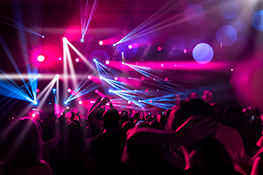Miniature LED Stage Lighting: Maximizing Impact in Compact Spaces
The Rise of Small-Scale Productions
The demand for intimate performances, smaller-scale theatrical productions, corporate events in limited spaces, and even personal live streaming setups is booming. This shift necessitates a reevaluation of traditional stage lighting solutions. Bulky fixtures, high power consumption, and extensive rigging requirements are simply impractical in many modern venues. Enter miniature LED stage lighting – a game-changer for compact spaces.
Advantages of Miniature LED Stage Lighting
Energy Efficiency and Heat Dissipation
Miniature LED lights are significantly more energy-efficient than their halogen or incandescent predecessors. This translates to lower operational costs and reduced environmental impact. Their efficient heat dissipation also contributes to a safer and more comfortable performance environment, especially beneficial in confined spaces where heat buildup can be a significant concern.
Compact Design and Flexible Placement
Their small size allows for discreet placement within set designs, minimizing visual intrusion and maximizing creative freedom. They can be easily mounted on existing structures, incorporated into props, or hidden within the set itself, achieving subtle yet impactful lighting effects.
Color Versatility and Control
Modern miniature LED fixtures offer a wide spectrum of color options and often include advanced control features. From subtle washes to dramatic spotlights, these miniature lights can achieve a surprising range of effects. DMX control allows for precise synchronization and programming, creating dynamic and engaging light shows, even in the smallest of spaces.
Durability and Longevity
LEDs boast a considerably longer lifespan than traditional light sources, reducing replacement costs and minimizing downtime. Their robust construction also ensures greater durability, making them ideal for frequent use and transportation.
Choosing the Right Miniature LED Fixtures
Understanding Lumens and Beam Angles
When selecting miniature LED lights, consider the lumens output – a measure of brightness. The beam angle dictates the spread of the light, influencing the effect you wish to create. A narrow beam is ideal for spotlights, while a wider angle is suitable for washes.
DMX Compatibility and Control Options
Assess your lighting control requirements. DMX compatibility is crucial for synchronized lighting effects and allows complex programming. Consider whether standalone control, wireless DMX, or integration with existing lighting systems is necessary.
Color Temperature and Rendering Index (CRI)
Color temperature, measured in Kelvin (K), influences the perceived “warmth” or “coolness” of the light. CRI indicates how accurately the light renders colors. High CRI values (above 90) are important for accurate color representation, especially for theatrical productions.
Creative Applications for Miniature LED Stage Lighting
Accent Lighting and Set Detailing
Miniature LEDs excel at highlighting specific areas within a set, creating dramatic shadows, and drawing the audience’s attention to critical elements.
Under-lighting and Up-lighting
Use them to create dramatic effects by illuminating set pieces from below or above, adding depth and visual interest to even the most compact stage.
Integration with Props and Costumes
Miniature lights can be seamlessly integrated into props and costumes, creating captivating visual effects and enhancing the storytelling aspects of the performance.
Conclusion: Embracing the Potential of Small
Miniature LED stage lighting represents a significant advancement in lighting technology, making professional-quality lighting accessible and practical for a wider range of productions. By understanding their capabilities and selecting the right fixtures, you can unlock incredible creative potential, transforming even the smallest of spaces into captivating performance venues.


 Auditorium Construction Services
Auditorium Construction Services 